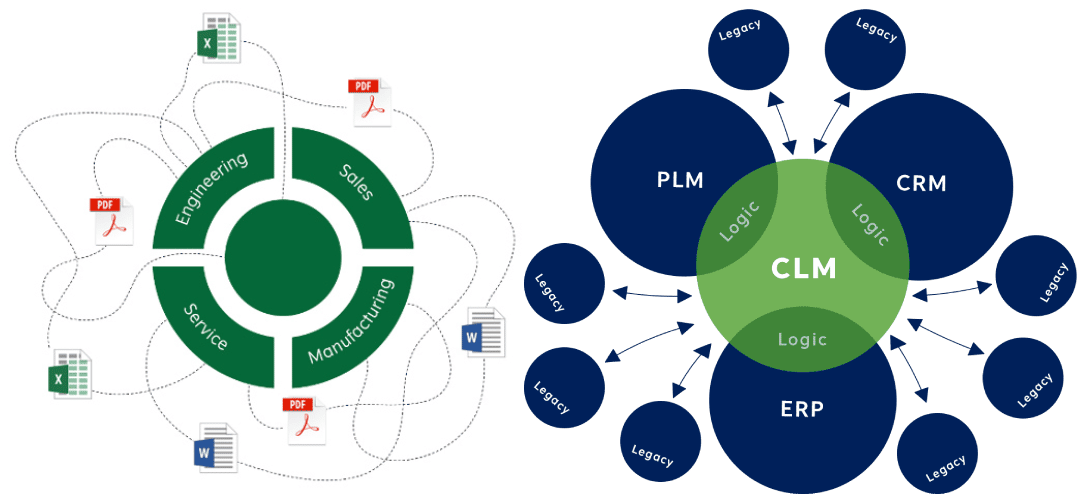The Configuration Lifecycle Management (CLM) platform is designed to manage product configuration information with specific focus on providing fast validation of product configurations. Not relying on conventional database technology, today’s modern Configuration Lifecycle Management platform uses Virtual Tabulation®, a multi-patented compilation-based technology that enables rapid calculations and validation of all correct product configurations.
Designed to be integrated with existing IT systems including Product Lifecycle Management (PLM), Enterprise Resource Planning (ERP), Customer Relationship Management (CRM) and Configure Price Quote (CPQ) systems, the Configuration Lifecycle Management (CLM) platform centralizes product configuration data from each of these systems, creating a single source of truth that can be shared throughout the entire organization. This ensures that all functions that work with products – Engineering, Sales, Manufacturing and Service – receive the same reliable and up-to-date information at the same time.
With Configit’s Virtual Tabulation® technology, it is possible to create a repository for all potential product models based on rules specific to your needs. This defines a solution space of all potential product configurations where rules can be used to limit the combinations to reflect both technical and commercial rules. For example, cars with steering wheels on the right can only be sold in specific countries, like the UK.
The advantages of Configit Virtual Tabulation® are that it can scale to millions of combinations and once all product models and configurations have been compiled, it provides extremely fast performance allowing real-time validation of a specific product configuration. A developer can use their own rule modeling system or can use Configit Ace Model® to define highly complex rules using logical expressions and if-then conditional logic both for individual products and systems of products.
Before you decide to execute a new CPQ implementation plan, or replace your existing CPQ software, consider the benefits of using the Configuration Lifecycle Management platform to enhance your existing CPQ investment.

